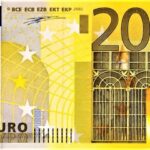Gold Slides on Dollar Recovery but Remains Supported by Broader Risks.
Gold (XAUUSD) retreated from its two-week high on Thursday, slipping back to around $3,310 after touching $3,345 earlier in the session. The pullback followed a temporary rebound in the US Dollar, but despite the intraday correction, market sentiment around the yellow metal remains broadly bullish. A confluence of fiscal stress in the United States, rising stagflation fears, and sustained geopolitical tensions continues to fuel investor appetite for safe-haven assets like Gold.
Dollar Rebounds, Pressuring Gold Prices
After falling to a two-week low of 99.35 on Wednesday, the US Dollar Index (DXY) stabilized near 99.70 during Thursday’s North American session. This modest recovery pressured Gold, which is priced in USD and typically inversely correlated with the currency. A stronger Dollar makes Gold more expensive for holders of other currencies, leading to softer demand in the short term.
However, the Greenback’s bounce appears to be temporary, driven more by technical corrections than fundamental shifts. Underlying concerns around US fiscal stability and long-term inflation expectations continue to limit the Dollar’s upside potential, providing a backstop for Gold prices.
US Debt Crisis Deepens: New Tax-Cut Bill Adds Fuel to the Fire
Gold’s recent strength has largely been fueled by growing anxiety over America’s worsening fiscal position. President Donald Trump’s proposed tax-cut legislation, which was passed by the House of Representatives and is now moving to the Senate, is projected to balloon the US national debt by $3.8 trillion over the next decade, according to the Congressional Budget Office (CBO).
The fiscal blowout has sparked alarm among investors, particularly in the wake of last Friday’s credit downgrade by Moody’s, which cut the US sovereign credit rating from Aaa to Aa1. The rating agency cited the federal government’s persistent inability to control deficit growth and rising interest costs as major risks to financial stability.
Market Experts Warn of Growing Deficit and Rate Burden
Market participants are increasingly uneasy about the implications of expanding deficits, especially with interest rates expected to remain elevated for longer. Higher debt servicing costs could strain public finances and limit the government’s ability to respond to future economic shocks.
Analysts warn that the timing of Trump’s tax cut is particularly problematic, as it coincides with rising borrowing costs and heightened geopolitical uncertainty. The combination of an aggressive fiscal stimulus and tight monetary policy may create a volatile macroeconomic backdrop that continues to favor Gold over riskier assets.
Fed Holds Steady as Stagflation Risks Loom
Despite the worsening debt outlook, the Federal Reserve has signaled that it will maintain its current interest rate stance amid signs of stagflation—a toxic mix of slow growth, high inflation, and rising unemployment. On Wednesday, JPMorgan Chase CEO Jamie Dimon backed the Fed’s wait-and-see approach, warning that the US economy is not in a “sweet spot” and urging policymakers to remain vigilant.
Dimon noted that geopolitical instability, growing deficits, and persistent price pressures could all contribute to a stagflationary environment. In such conditions, central banks are often hesitant to cut interest rates, which can be negative for non-yielding assets like Gold. However, historically, Gold has also acted as a hedge during prolonged inflationary cycles, making it attractive despite rate-related headwinds.
Russia-Ukraine Ceasefire Hopes Fade, Boosting Safe-Haven Demand
Geopolitical risks are also playing a key role in supporting Gold prices. Hopes for a near-term resolution to the Russia-Ukraine conflict were dashed after President Trump reportedly told European leaders that Russian President Vladimir Putin is unlikely to agree to a truce, believing he holds the upper hand in the war.
This statement came just days after Trump suggested on his social media platform, Truth.Social, that both sides had agreed to truce talks in Vatican City. However, no concrete details or timelines were provided, casting doubt on the prospects for a diplomatic breakthrough.
As geopolitical uncertainty persists, investors are increasingly turning to traditional safe-haven assets. Gold, in particular, benefits from heightened fear and instability, as it is widely viewed as a store of value during crises.
Economic Data Watch: Jobless Claims and PMI in Focus
On the data front, US Initial Jobless Claims for the week ending May 16 came in at 227,000, slightly below the forecast of 230,000 and previous reading of 229,000. While the labor market remains relatively stable, concerns about a broader economic slowdown remain elevated.
Looking ahead, markets are awaiting the S&P Global Purchasing Managers’ Index (PMI) for May, which will offer fresh insights into the health of the manufacturing and services sectors. Weak or contractionary PMI data could strengthen the case for continued risk aversion and further bolster demand for Gold.
Technical Outlook: Bullish Structure Intact Despite Pullback
From a technical perspective, the broader structure for Gold remains bullish. The retreat from $3,345 to $3,310 appears to be a healthy correction rather than a reversal. As long as the price holds above key support levels near $3,280, the path of least resistance remains to the upside.
A sustained break above the recent high of $3,345 would open the door for a potential test of the $3,375–$3,400 zone. On the downside, a breach below $3,280 could expose the metal to a deeper pullback toward the $3,240–$3,250 area.
Investor Sentiment Remains Gold-Friendly
Despite some short-term volatility, the broader macroeconomic and geopolitical backdrop continues to favor Gold. Rising fiscal imbalances, diminishing hopes for a geopolitical resolution, and stagflationary pressures are all contributing to a supportive environment for the precious metal.
While interest rate uncertainty and a stronger Dollar may intermittently pressure prices, the underlying drivers of demand remain intact. Institutional investors and central banks alike are likely to continue allocating capital toward Gold as a hedge against systemic risks.
Conclusion: Gold Faces Short-Term Hurdles but Long-Term Tailwinds Remain
Gold’s brief pullback to $3,310 does little to undermine its bullish long-term outlook. As the US grapples with a mounting debt crisis, the possibility of stagflation, and a volatile global landscape, the yellow metal remains a critical hedge for investors seeking protection and portfolio diversification.
With uncertainty likely to dominate the macroeconomic narrative in the months ahead, Gold well-positioned to remain a key beneficiary of risk-off sentiment and structural fiscal challenges in the United States.







